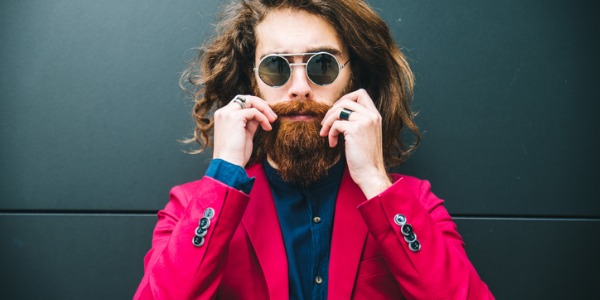What is a Model?
Models pose for artists, photographers, or customers to help advertise a variety of products, including clothing, cosmetics, food, and cars. Having the right look and talent is inherited genetically. The other part of modeling is knowing what to do, how to market yourself, and deliver what the client needs. Professional models constantly look good in front of a camera, show the expression(s) needed on cue, show up on time, and make the shoot go quickly, efficiently, and successfully. The part after the genetics is what makes a professional model and leads to a career in modeling.
What does a Model do?

Models are hired by companies to advertise their clothing or product by way of magazines, television, newspapers, catalogues, billboards, and online. Print models participate in photo shoots, in which they pose for photographers. Models change their posture and facial expressions to capture the look the client wants. The photographer usually takes hundreds of pictures of the model in different poses and expressions during the photo shoot.
Models also pose live in a variety of locations. At fashion shows, models stand, turn, and walk to show off clothing to an audience of photographers, journalists, designers, and garment buyers. In retail establishments and department stores, they display clothing directly for shoppers and may be required to describe the features and prices of the clothing. Other models pose for sketch artists, painters, and sculptors.
Models typically do the following:
- Pose for artists that are taking photos, or creating paintings or sculptures
- Promote products in commercials
- Display clothing, such as dresses, coats, underclothing, swimwear, and suits, for a variety of audiences and in various media
- Display accessories, such as handbags, shoes, and jewelry
- Promote beauty products, including fragrances and cosmetics
- Work closely with photographers, hair and clothing stylists, makeup artists, and clients to produce a desired look
- Wear designers' clothing for runway fashion shows
- Create and maintain a portfolio of their work
- Travel to meet and interview with potential clients
- Conduct research on the product being promoted—for example, the designer or type of fabric of a particular article of clothing
Almost all models work with agents, who provide a link between them and clients. Clients often prefer to work with agents, which makes it very difficult for a model to pursue a freelance career. Agents look for “fresh faces,” advise and train models, and promote them to clients in return for a portion of the model’s earnings. Models may also work with hair stylists and makeup artists to prepare for photo shoots or fashion shows. The stylist and makeup artist may touch up the model's hair and makeup, and change the model's look throughout the event. Models might sometimes be responsible for applying their own makeup and bringing their own clothing.
Models spend a considerable amount of time promoting themselves by putting together and maintaining portfolios, printing composite cards, and travelling to meet potential clients. A portfolio is a collection of a model's previous work and is carried to all client meetings and bookings. A composite card contains the best photographs from a model's portfolio, along with his or her measurements.
Because advertisers often need to target specific segments of the population, models may specialize in a certain area. For example, petite and plus-size fashions are modelled by women whose size is, respectively, smaller and larger than that worn by the typical model. “Parts” models have a body part, such as a hand or foot, particularly well suited to model products such as fingernail polish or shoes.

What is the workplace of a Model like?
Models work in a variety of conditions, from comfortable studios and runway fashion shows to outdoors in all weather conditions. Schedules can be demanding and stressful, although some models may enjoy the frequent travel to meet clients in different cities. Many models work part time, often with unpredictable work schedules. They must be ready at a moment’s notice to attend photo shoots or shows. Most models have periods of unemployment.
Frequently Asked Questions
Should I become a Model?
Models are considered to be beautiful and glamorous people who lead beautiful and glamorous lives. However, it might be surprising to hear that their careers may not be as fabulous as people may think. Fashion is basically all image and perception, and there are both pros and cons to being in this career. If you feel that you have what it takes to be a model and are determined to pursue this avenue, there are a few things to keep in mind before taking that step onto the catwalk.
Cons of modeling may include:
Not getting paid a lot of money at the beginning - Many models struggle to earn a decent pay cheque and often get paid in clothes or with a free lunch. There may not be work for a few weeks at a time which can make it difficult to pay bills and make a living. There is often debt owed to agencies for covering initial living expenses, and most models don't make any money of their own until that debt is paid off.
Running around to castings day after day
- A casting is where the model must present him/herself in front of a client or casting director. Clients want to meet in person to be sure that photos are a recent and true representation. They may also want the model to walk or pose, and see if the photographer has any concerns as well. It’s not unusual to get as many as 20 castings in one day during and in the lead up to Fashion Week.
Learning how to deal with constant criticism and rejection - Chances are that people don't think a lot about the lives of the models they're looking at when flipping through the pages of fashion magazines and catalogs. The glamour is often outweighed by rejection, demands to be thin, intense schedules, on-going criticism, and low pay.
The modeling industry is unregulated - An unregulated industry means that there is no union. Models don't get health insurance or other benefits typically afforded to employees because they are considered independent contractors.
The need to stay thin - Typically, modeling necessitates having to diet and exercise constantly. There is a lot of pressure from designers and agents to achieve a certain figure. High fashion models typically need to fit into this mold since designers want models to show their designs in a certain way. However, there are many other areas that models can work successfully, as the modeling industry looks for all different shapes and sizes.
The professional cycle of a model is extremely short-lived - Age is a factor, as most runway models are in their teens and are replaced after they reach a certain age. There are other areas of modeling, however, that are open to hiring older models.
Long and tiring days - Most of the work involves long hours, lots of waiting, lots of standing, and having to pose for the camera for extended periods. It may also involve a lot of travelling.
Pros of modeling may include:
- Being in the world of fashion and cosmetics
- Being able to wear designer clothing, shoes and accessories
- Meeting interesting and famous people
- Having the opportunity to perhaps become famous and earn a lot of money one day
- Seeing different parts of the world
Steps to becoming a Model
No formal education is required and training is limited. Specific requirements depend on the client, but most models must be within certain ranges for height, weight, and clothing size to meet the needs of fashion designers, photographers, and advertisers.
Some aspiring models attend modeling schools that provide training in posing, walking, applying makeup, and other basic tasks. Attending such schools, however, does not necessarily lead to job opportunities. Some models are discovered when agents scout for “fresh faces” at modeling schools, but most agencies have “open calls” and allow applicants to email photos directly to the agency. The models who are picked are then invited to be interviewed and seen in person by an agent. Some agencies sponsor modeling contests and searches.
Because models' advancement depends on their previous work, maintaining a good portfolio of high–quality, up-to-date photographs is important to getting assignments. Models advance by working more regularly and being selected for assignments that have higher pay. They may appear in magazines, print campaigns, commercials, or runway shows with higher profiles. They may work with clients who will provide them with more widespread exposure. A model's selection of an agency is an important factor for advancement in the occupation: the better the reputation and skill of the agency, the more assignments a model is likely to get.
How long does it take to become a Model?
It takes time to fill up a portfolio with great images and build momentum in the modeling industry. It all depends on what one's interpretation of success is, but the bottom line is that the better the portfolio, the more work one will get.
Thinking of modeling as a business and the model as only one part of the equation is important. There are many people behind the scenes that models need to work well with, so having an easy going attitude and a hard work ethic will go a long way in getting jobs. Being able to be fearless in front of the camera or on the catwalk is also important, as there's usually not a lot of time to get things done.
Models that are starting out should give themselves at least 18 months to get a feel for what is needed and wanted in the industry.
Are Models happy?
Models rank in the 90th percentile of careers for satisfaction scores. Please note that this number is derived from the data we have collected from our Sokanu members only.
Being a model can be a very stressful job, as success is 100% tied to looks and the ability to appear perfect. Being smart or talented or having a PhD just doesn't matter. Stress can be attributed to the fact that humans are not meant to look flawless all the time. Being constantly judged on exactly how one looks and nothing else can be extremely difficult for some and can affect job satisfaction.
Modeling can be really difficult on the body as well, and working in a supremely superficial environment can also lead to self esteem issues and eating disorders. Living a happy, healthy life in this career means knowing how to be balanced. This includes eating healthy, working out, and getting enough sleep.
When works dries up due to age or other factors, depression can set in from losing a steady income. However, there are models that create spin off businesses and are happy to continue using the industry as a base for their own sustainable income.
Models are also known as:
Figure Model
Fashion Model
Editorial Fashion Model
Fashion Catalog Model
Catalog Model
Runway Model
Commercial Model
Print Model
Glamour Model
Promo Model
Promotional Model
Spokesmodel
Petite Model
Fitness Model
Parts Model
Pin-Up Model
Plus-Size Model
Art Model